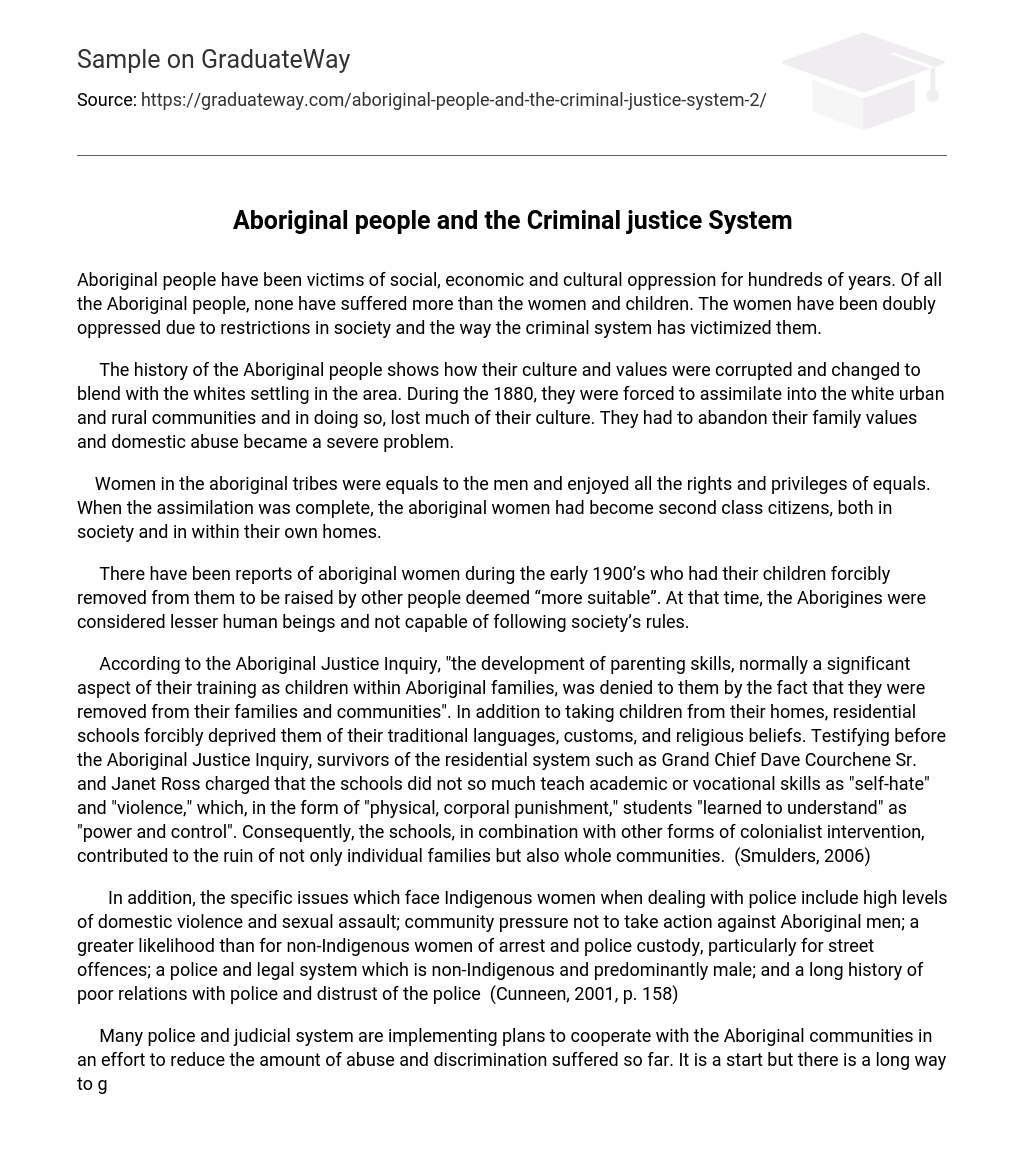Aboriginal people have been victims of social, economic and cultural oppression for hundreds of years. Of all the Aboriginal people, none have suffered more than the women and children. The women have been doubly oppressed due to restrictions in society and the way the criminal system has victimized them.
The history of the Aboriginal people shows how their culture and values were corrupted and changed to blend with the whites settling in the area. During the 1880, they were forced to assimilate into the white urban and rural communities and in doing so, lost much of their culture. They had to abandon their family values and domestic abuse became a severe problem.
Women in the aboriginal tribes were equals to the men and enjoyed all the rights and privileges of equals. When the assimilation was complete, the aboriginal women had become second class citizens, both in society and in within their own homes.
There have been reports of aboriginal women during the early 1900’s who had their children forcibly removed from them to be raised by other people deemed “more suitable”. At that time, the Aborigines were considered lesser human beings and not capable of following society’s rules.
According to the Aboriginal Justice Inquiry, “the development of parenting skills, normally a significant aspect of their training as children within Aboriginal families, was denied to them by the fact that they were removed from their families and communities”. In addition to taking children from their homes, residential schools forcibly deprived them of their traditional languages, customs, and religious beliefs. Testifying before the Aboriginal Justice Inquiry, survivors of the residential system such as Grand Chief Dave Courchene Sr. and Janet Ross charged that the schools did not so much teach academic or vocational skills as “self-hate” and “violence,” which, in the form of “physical, corporal punishment,” students “learned to understand” as “power and control”. Consequently, the schools, in combination with other forms of colonialist intervention, contributed to the ruin of not only individual families but also whole communities. (Smulders, 2006)
In addition, the specific issues which face Indigenous women when dealing with police include high levels of domestic violence and sexual assault; community pressure not to take action against Aboriginal men; a greater likelihood than for non-Indigenous women of arrest and police custody, particularly for street offences; a police and legal system which is non-Indigenous and predominantly male; and a long history of poor relations with police and distrust of the police (Cunneen, 2001, p. 158)
Many police and judicial system are implementing plans to cooperate with the Aboriginal communities in an effort to reduce the amount of abuse and discrimination suffered so far. It is a start but there is a long way to go. Many Aboriginal women do not believe that the reform attempts will protect them from the domestic violence and police brutality that they have come to see as inevitable.
The double oppression of aboriginal women continues today although some reforms have been made. It is up to the tribal members themselves to teach their children how to overcome the patterns learned from the past and create a new future where women are once again equal in the home. This, in turn, will lead to changes in the way society and the criminal justice system treat Aboriginal women as well.
References
Cunnen, C. (2001). Conflict, Politics and Crime : Aboriginal Communities and the Police /. Crows Nest, N.S.W.: Allen & Unwin. Retrieved March 13, 2007, from Questia database: http://www.questia.com/PM.qst?a=o&d=102036860
Smulders, S. (2006). “A Double Assault”: The Victimization of Aboriginal Women and Children in in Search of April Raintree. Mosaic (Winnipeg), 39(2), 37+. Retrieved March 12, 2007, from Questia database: http://www.questia.com/PM.qst?a=o&d=5015823632





